Wind Resource Assessment on Puná Island
Abstract
:1. Introduction
2. Materials and Methods
3. Fundamentals of Electricity Production from Wind
- = wind speed at height z;
- = wind speed at height ; and
- = friction velocity;
- = the von Karmann constant;
- = roughness length; and
- α = friction or Hellman coefficient.
- v = wind speed;
- = mean wind speed;
- p(v) = probability density function of wind speed;
- = standard deviation of wind speed;
- = Rayleigh distribution;
- = cumulative distribution function;
- = Weibull distribution;
- = cumulative distribution function;
- k = shape factor; and
- c = scale factor.
- = Power per unit area or wind power density (power that can be extracted from the wind by a wind turbine having the rotor swept area A).
- P = power (watts);
- ρ = air density (1.225 kg/m3);
- v = wind speed (m/s);
- = mean wind power (watts);
- = annual mean wind speed (m/s);
- = energy pattern factor;
- N = 8760 hours in a year; and
- = wind hours available.
- direct use of the mean data during an interval;
- wind speed data binning (bins);
- construction of a wind power curve using the data; and
- statistical analysis.
- = power calculated using the wind turbine power curve as a function of v;
- p(v) = probability distribution of v;
- = rotor power coefficient;
- η = drive train efficiency;
- λ = tip speed ratio;
- Ω = angular speed (radians/sec); and
- R = rotor radius.
4. Results
4.1. Frequency Distributions
4.2. Wind Direction
4.3. Vertical Wind Profile as a Function of Height
4.4. Short-Term Wind Variation, Gusts, and Turbulence
4.5. Contour Line Maps, Isotach Maps, and Wind Turbine Siting
4.6. Wind Turbine Selection and Assessed Wind Power
5. Conclusions and Recommendations
- electricity demand of the island;
- wind resources using an 80-m anemometer tower in several locations on the island, especially in the region closest to the Pacific Ocean (Punta Carnero);
- civil engineering considerations (foundations for wind turbines, access roads, electrical grids);
- type of coupling to the wind turbine grid (direct coupling or via accumulators); and
- costs and funding.
Author Contributions
Funding
Acknowledgments
Conflicts of Interest
References
- Gaceta Oficial del Muy Ilustre Municipio de Guayaquil. Available online: http://www.guayaquil.gob.ec/Gacetas/Periodo%202014-2019/Gaceta%2024.pdf (accessed on 3 September 2018).
- Los Delfines de la isla Puná. Available online: http://losdelfinesdelaislapuna.blogspot.com/2013/12/informacion-goegrafica.html (accessed on 3 September 2018).
- Google Maps. Available online: https://www.google.com/maps/ (accessed on 3 September 2018).
- Instituto Nacional Ecuatoriano de Estadisticas y Censo. Available online: http://www.ecuadorencifras.gob.ec/institucional/home/ (accessed on 20 April 2019).
- Navarrete, R.; Carcelén, F.; Sotomayor, P.; Pérez, J. Evaluación ecológica y Social de la Comuna Subida alta Parroquia Puná, Guayaquil. Provincia del Guayas. 2011. Available online: https://www.academia.edu/31048020/Evaluaci%C3%B3n_Ecol%C3%B3gica_Subida_Alta._Isla_Pun%C3%A1._Prov._Guayas._Ecuador (accessed on 10 April 2019).
- Pereira, M.; Freitas, M.; Da Silva, N. Rural electrification and energy poverty: Empirical evidences from Brazil. Renew. Sustain. Energy Rev. 2010, 14, 1229–1240. [Google Scholar] [CrossRef]
- Kaygusuz, K. Energy services and energy poverty for sustainable rural development. Renew. Sustain. Energy Rev. 2011, 15, 936–947. [Google Scholar] [CrossRef]
- Gonzalez-Longatt, F. Wind Resource Potential in Los Taques Venezuela. IEEE Lat. Am. Trans. 2011, 13, 1429–1437. [Google Scholar] [CrossRef]
- Guasch, J. Diseño de una Torre de Medición de Viento Para Auditoria del Recurso Eólico. Ph.D. Thesis, Departament d’ Enginyeria Electránica, Eléctrica i Automática, Universitat Rovira I Virgili, Tarragona, Cataluña, España, 2015. Available online: https://openair.rgu.ac.uk/bitstream/handle/10059/268/AndrawusThesis.pdf (accessed on 10 January 2017).
- Leslie, R. Power from Wind: A History of Windmill Technology, 1st ed.; Cambridge University Press: New York, NY, USA, 1996; ISBN 9780521566865. [Google Scholar]
- Köse, R. An evaluation of wind energy potential as a power generation source in Kutahya, Turkey. Energy Convers. Manag. 2004, 45, 1631–1641. [Google Scholar] [CrossRef]
- Domagalski, P.; Bardal, L. Vertical Wind Profiles in Non-neutral Conditions-Comparison of Models and Measurements from Frøya. J. Offshore Mech. Arct. Eng. 2019, 141, 041101. [Google Scholar] [CrossRef]
- Stevens, M.; Smulders, P. The estimation of the parameters of the Weibull wind speed distribution for wind energy utilization purposes. Wind Eng. 1979, 3, 132–145. [Google Scholar]
- Manwell, J.; McGowan, J.; Rogers, A. Wind Energy Explained. Theory, Design and Application, 2nd ed.; John Wiley and Sons: Gewerbestrasse, Switzerland, 2009; ISBN 978-0-470-01500-1. [Google Scholar]
- Vestas. Available online: https://en.wind-turbine-models.com/turbines/695-vestas-v126-3.3 (accessed on 12 April 2019).
- Ayodele, T.; Ogunjuyigbe, A.; Amusan, T. Techno-economic analysis of utilizing wind energy for water pumping in some selected communities of Oyo State, Nigeria. Renew. Sustain. Energy Rev. 2018, 91, 335–343. [Google Scholar] [CrossRef]
- Bekele, G.; Palm, B. Wind energy potential assessment at four typical locations in Ethiopia. Appl. Energy 2009, 86, 388–396. [Google Scholar] [CrossRef]
- Mostafaeipour, A.; Sedaghat, A.; Dehghan-Niri, A.; Kalantar, V. Wind energy feasibility study for city of Shahrbabak in Iran. Renew. Sustain. Energy Rev. 2011, 15, 2545–2556. [Google Scholar] [CrossRef]
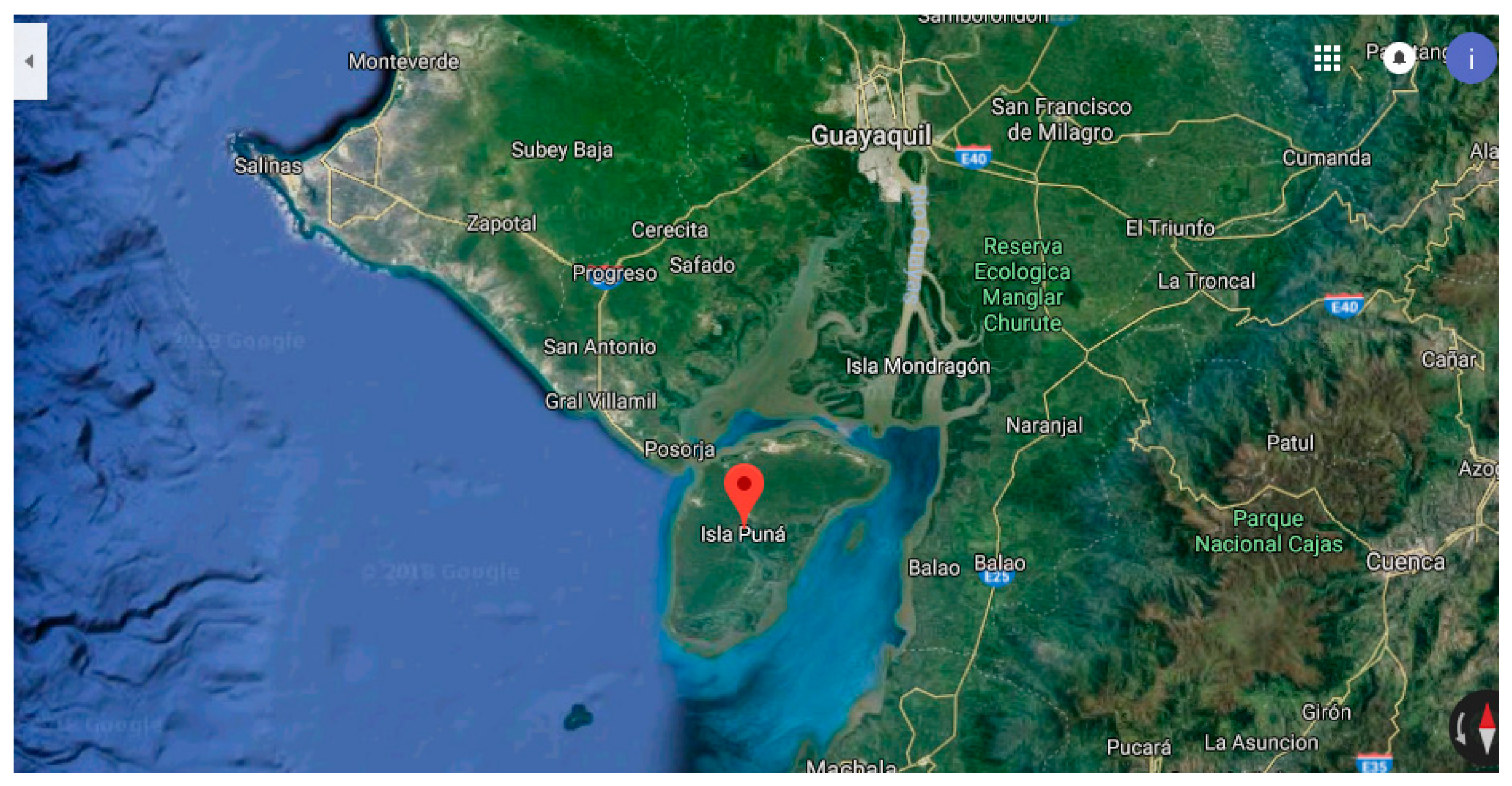
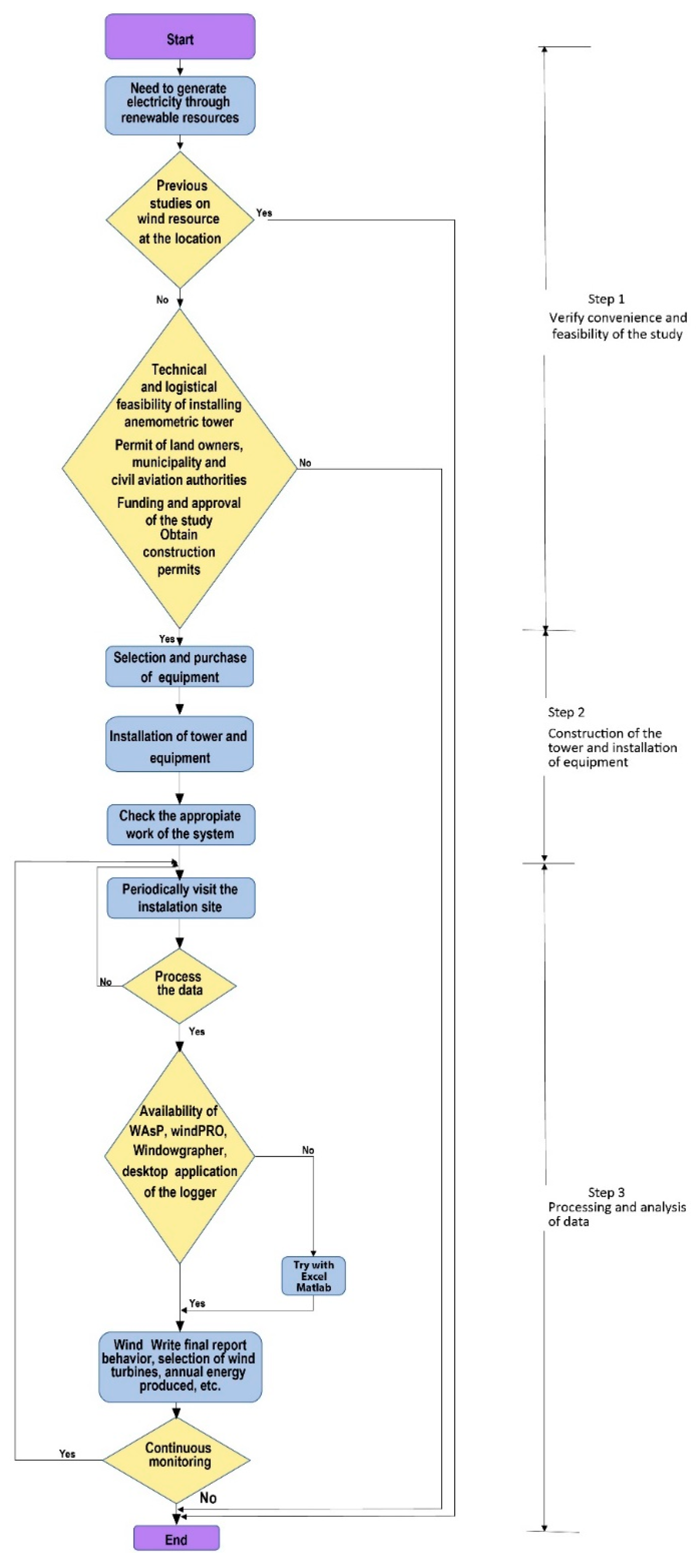
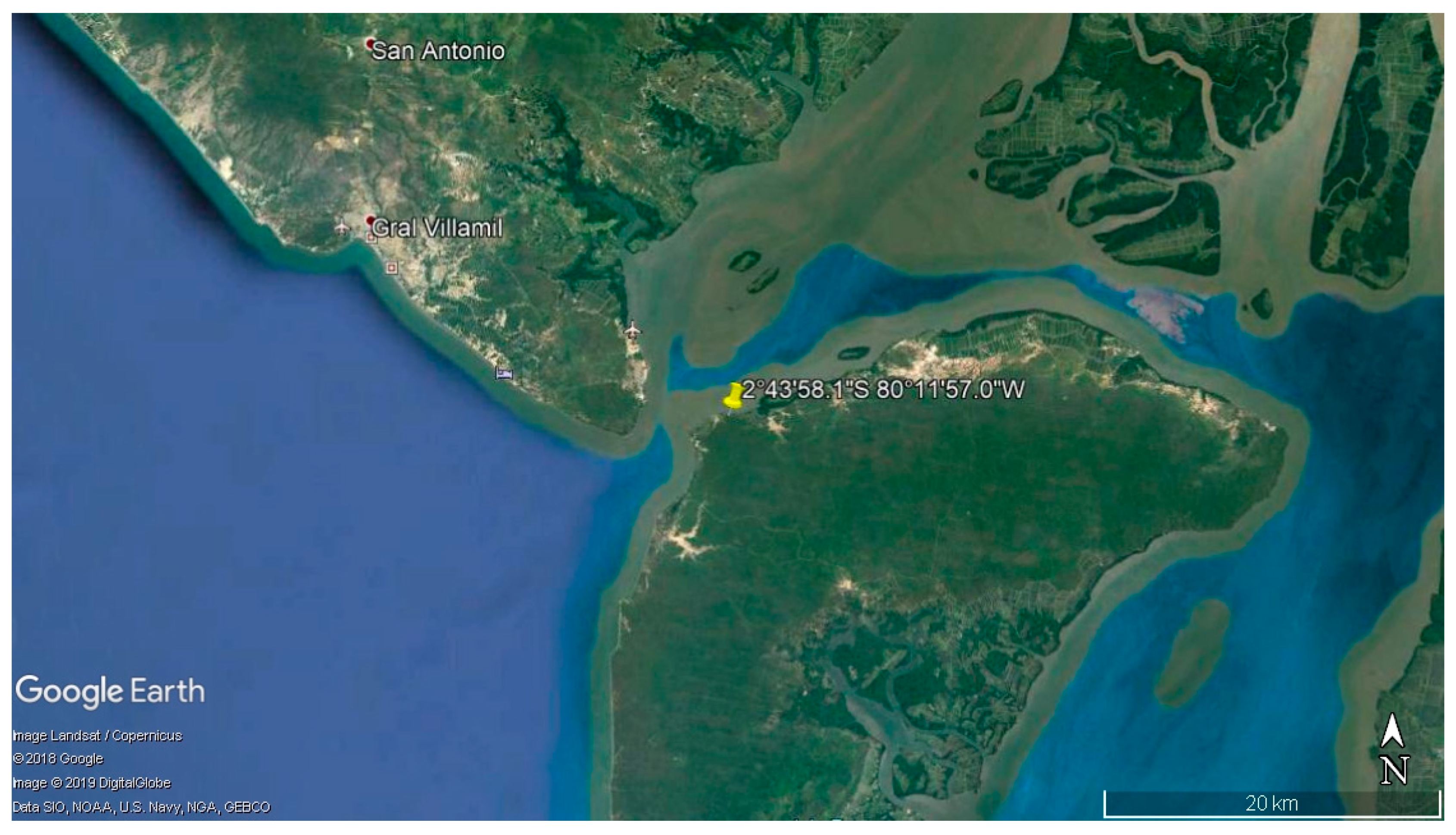
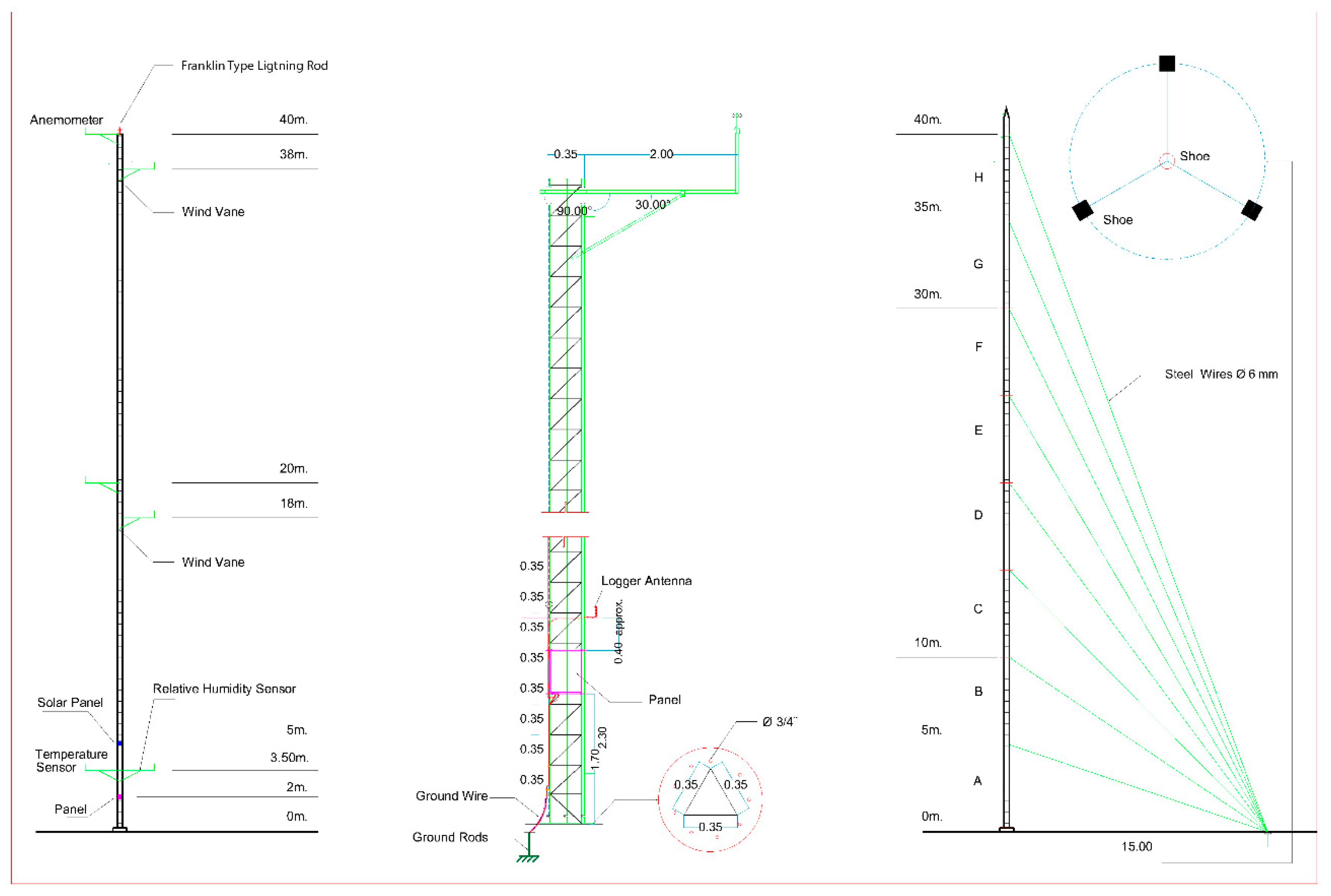
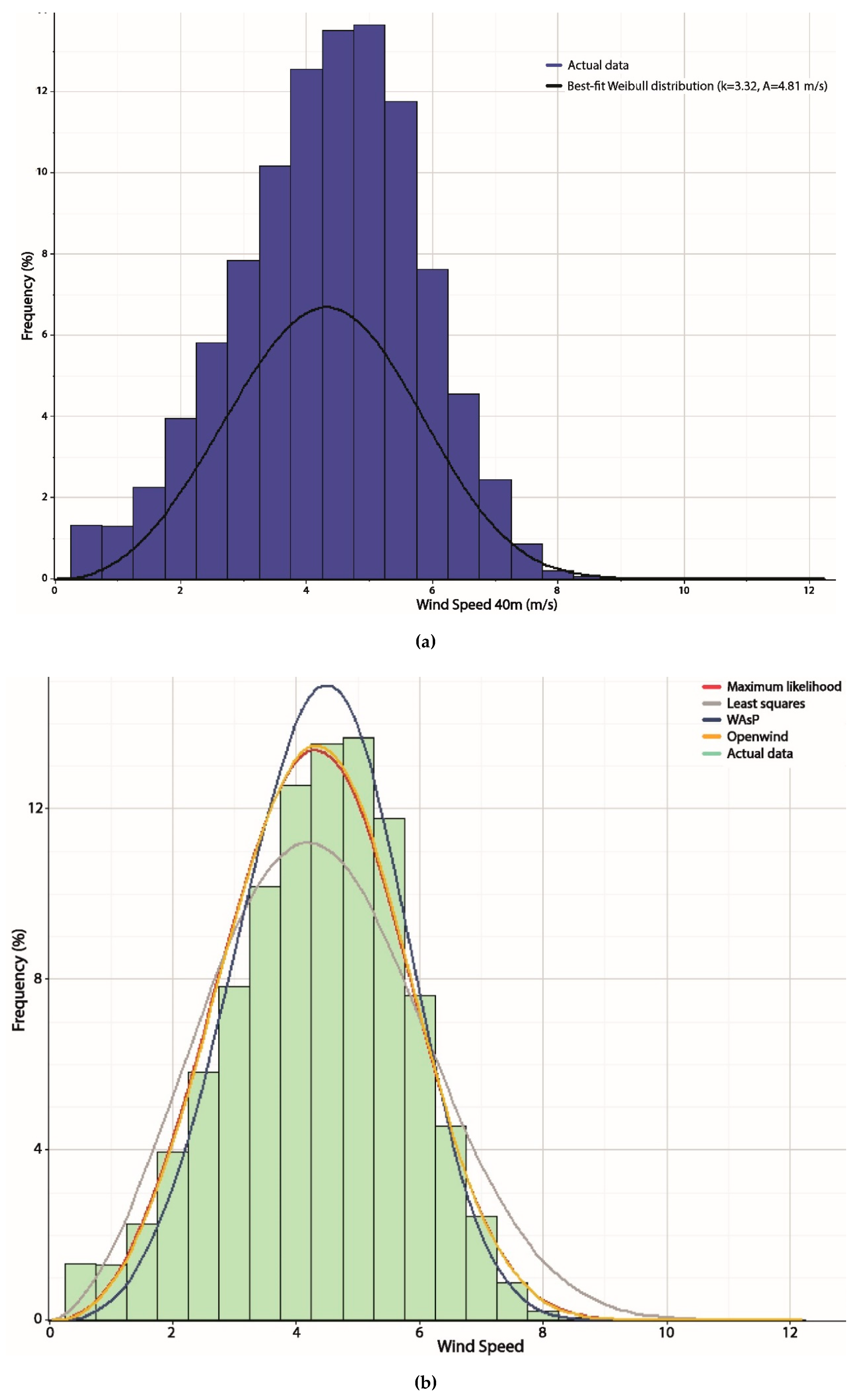
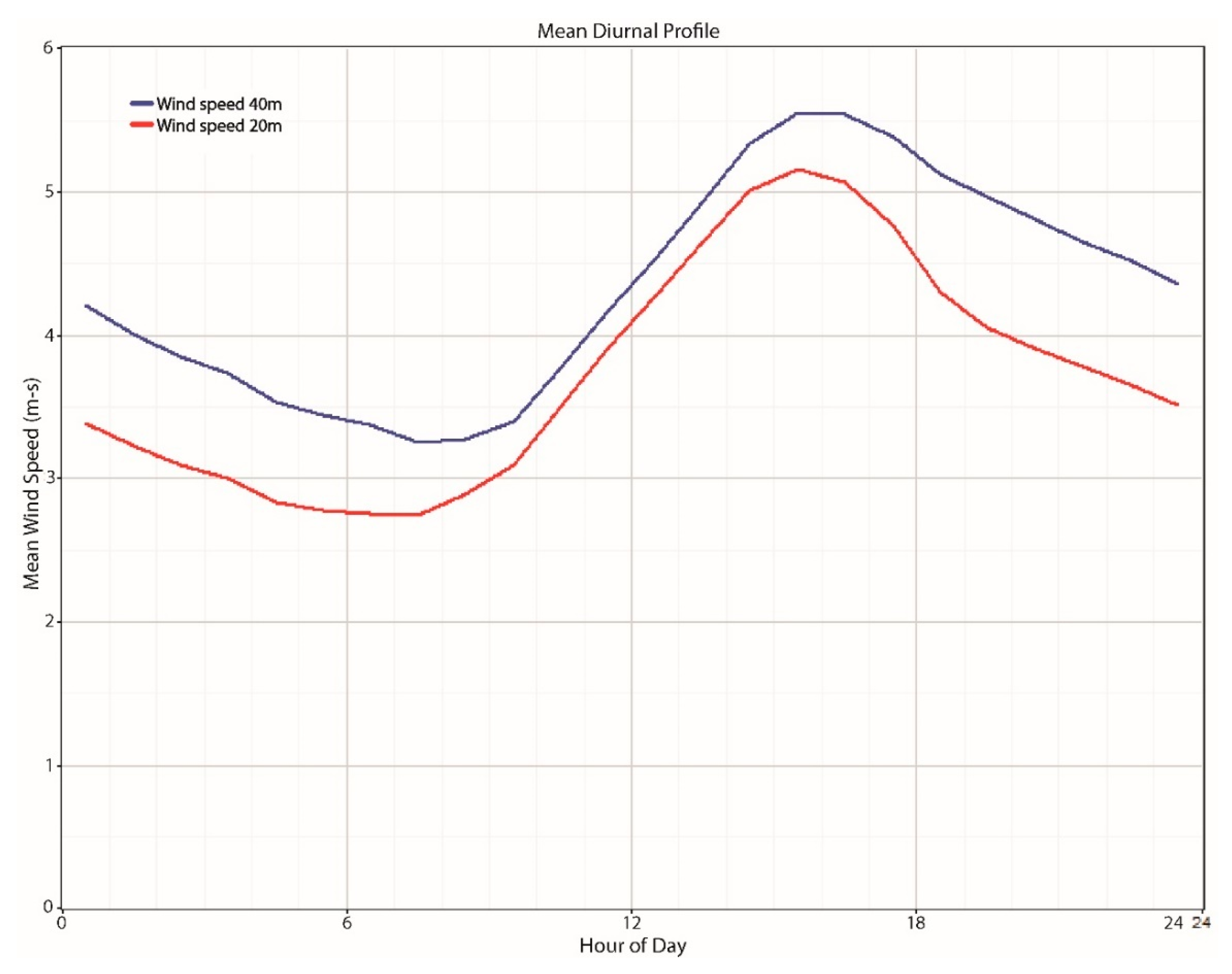
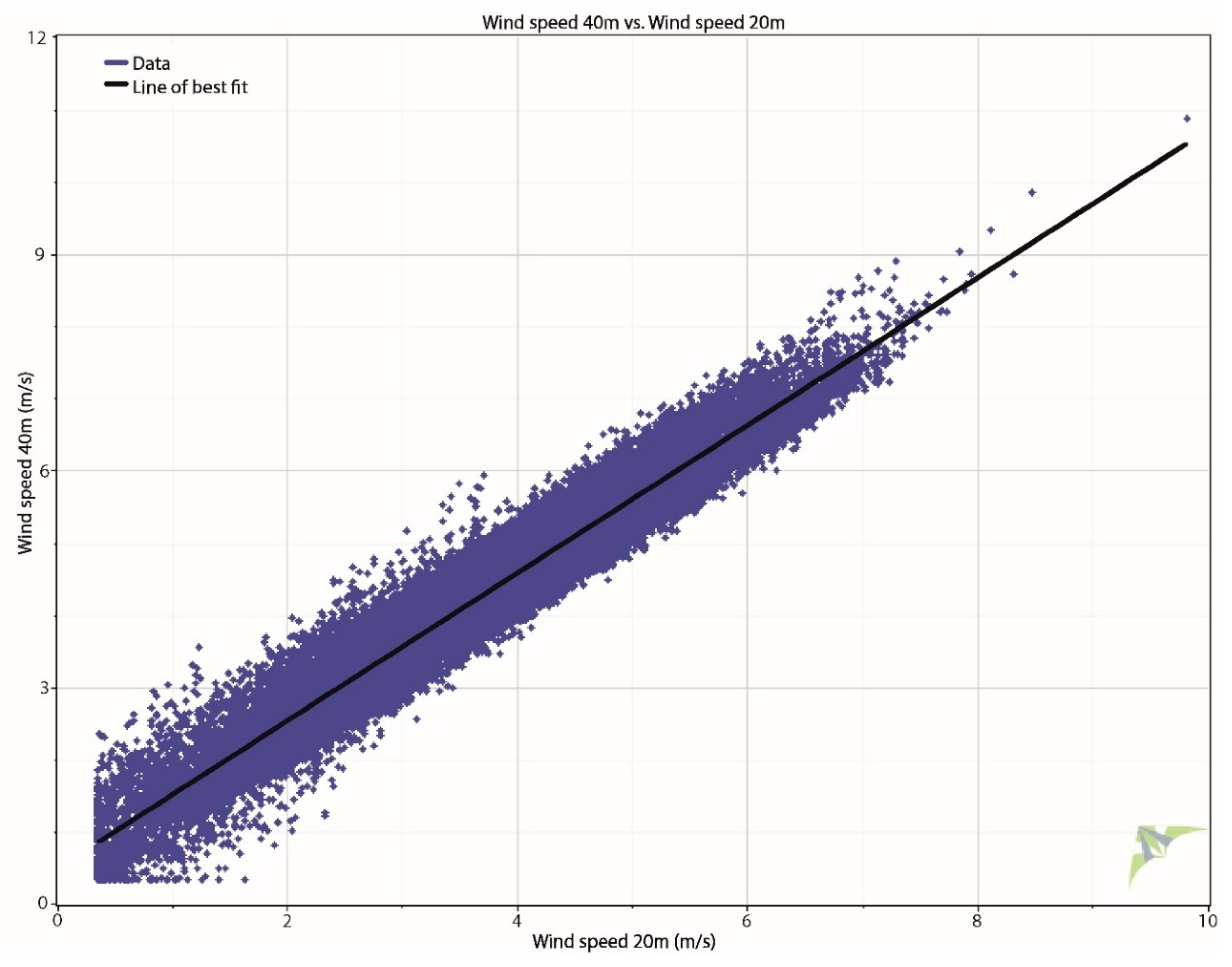
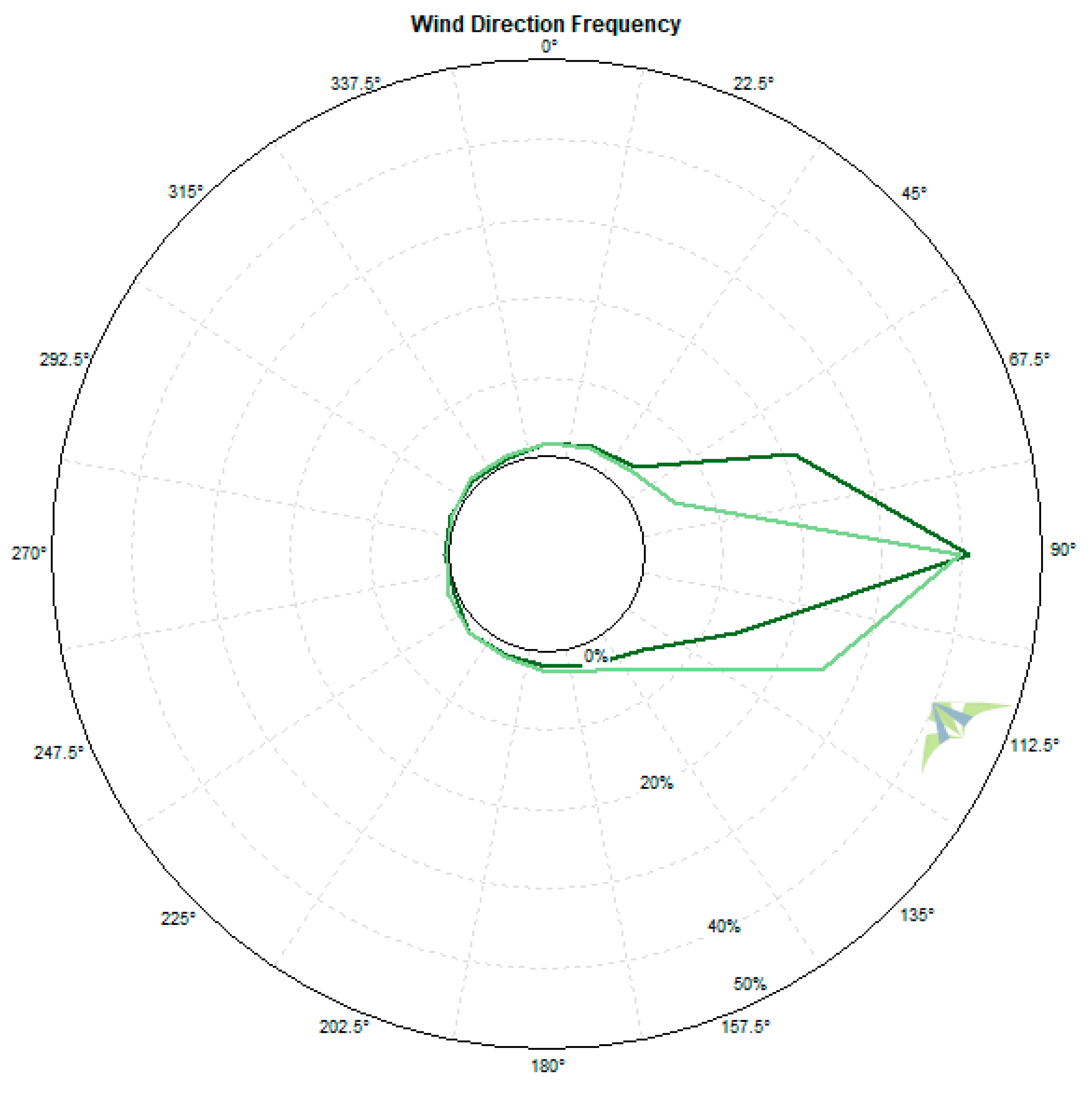
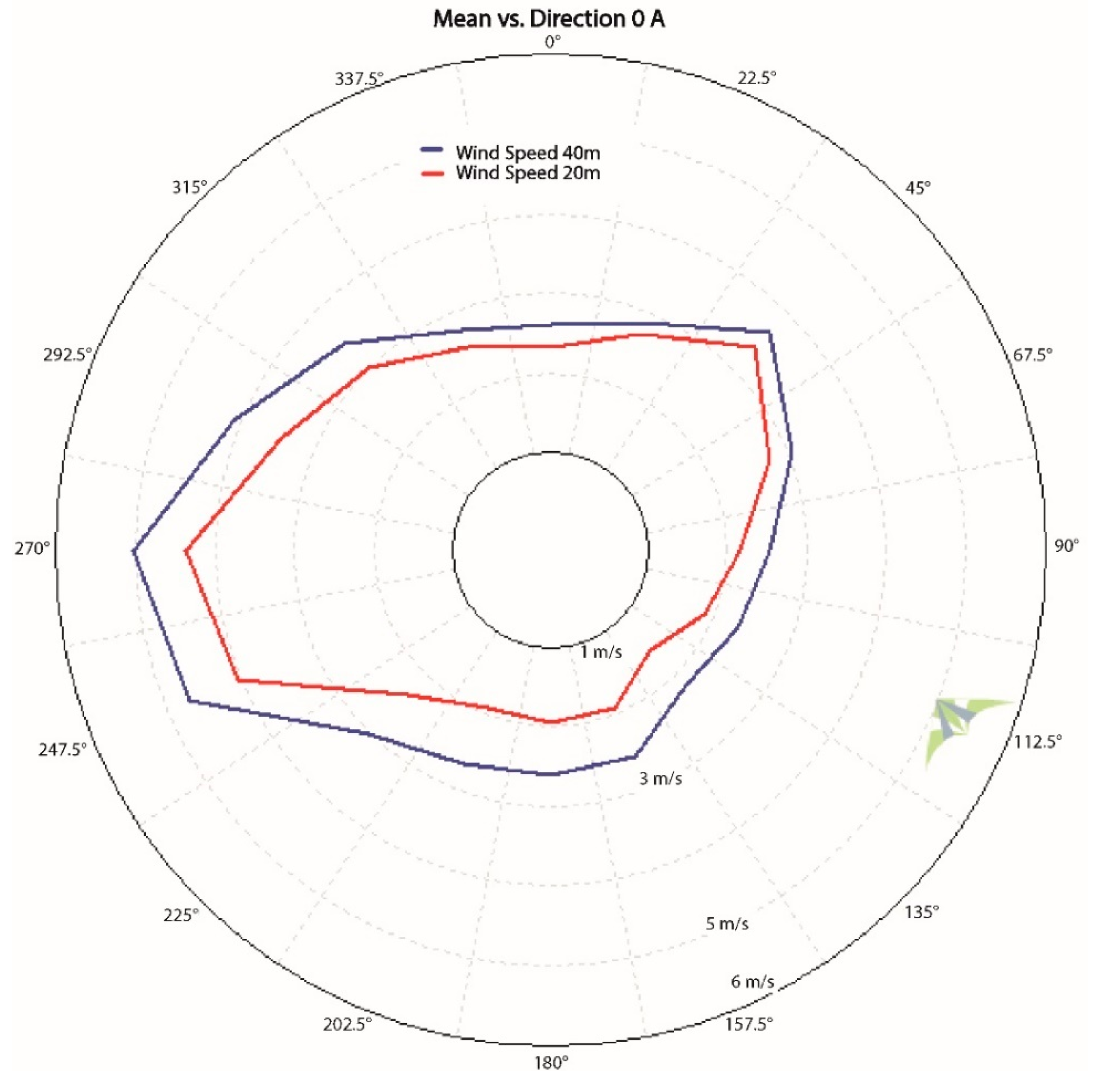
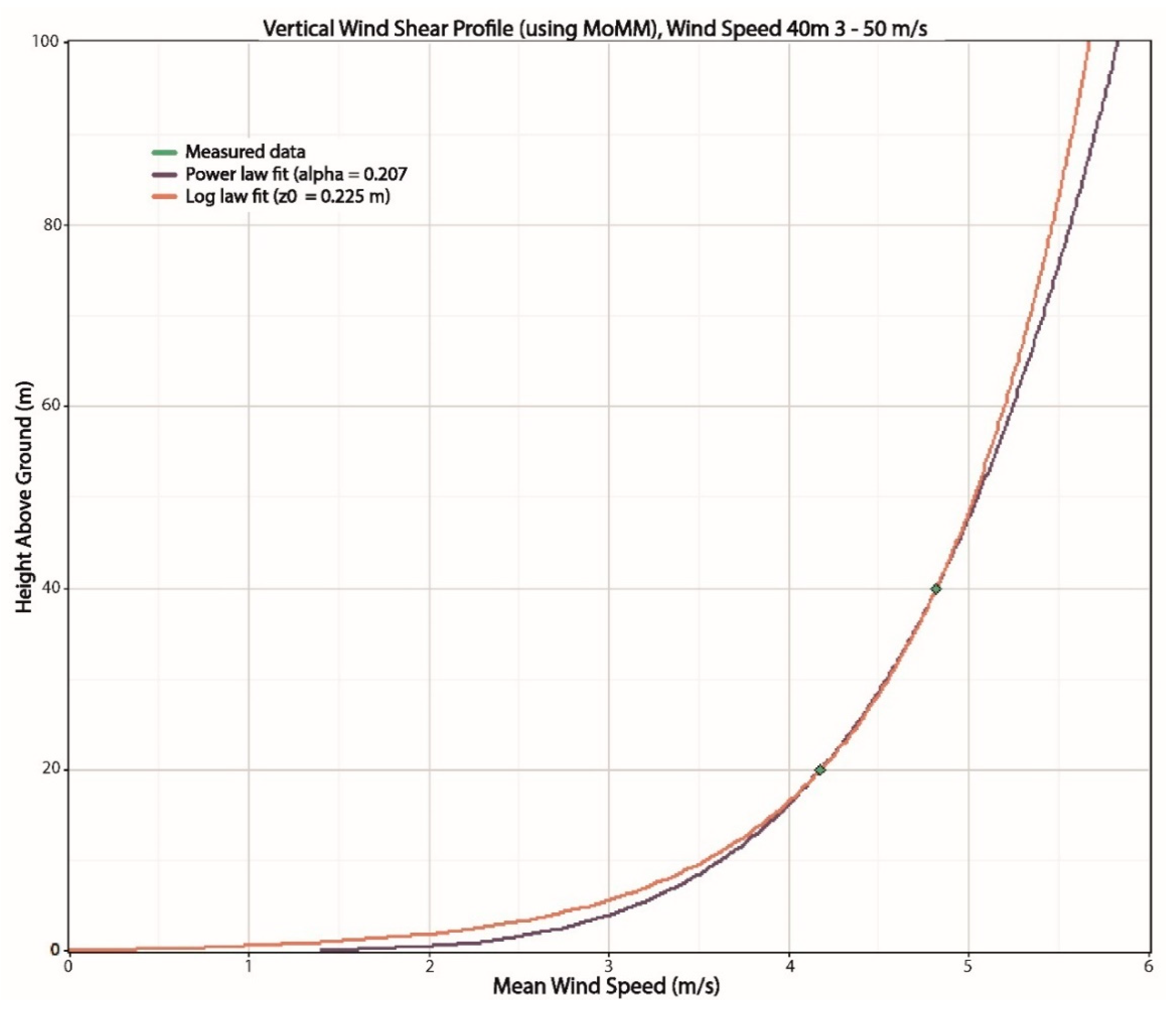
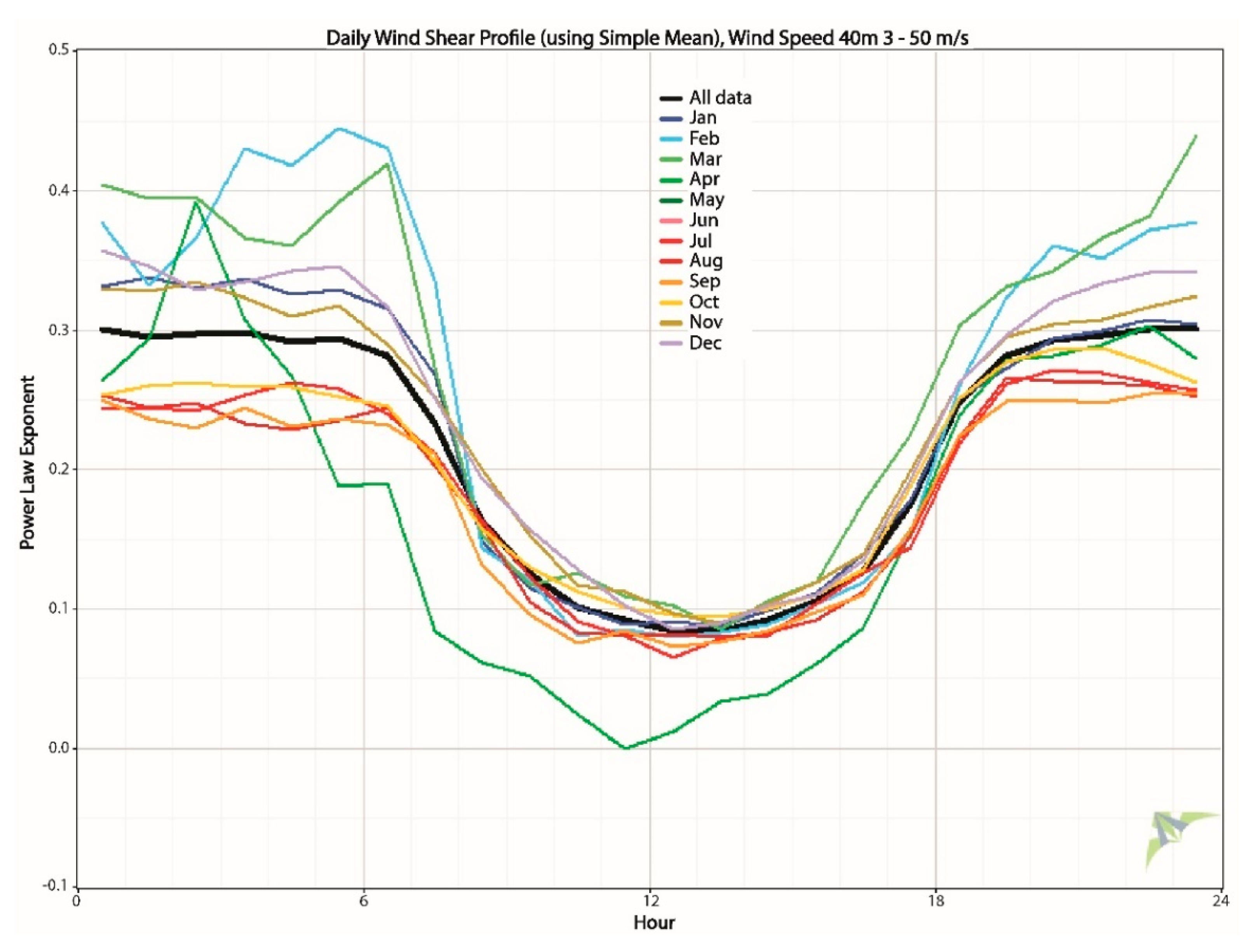
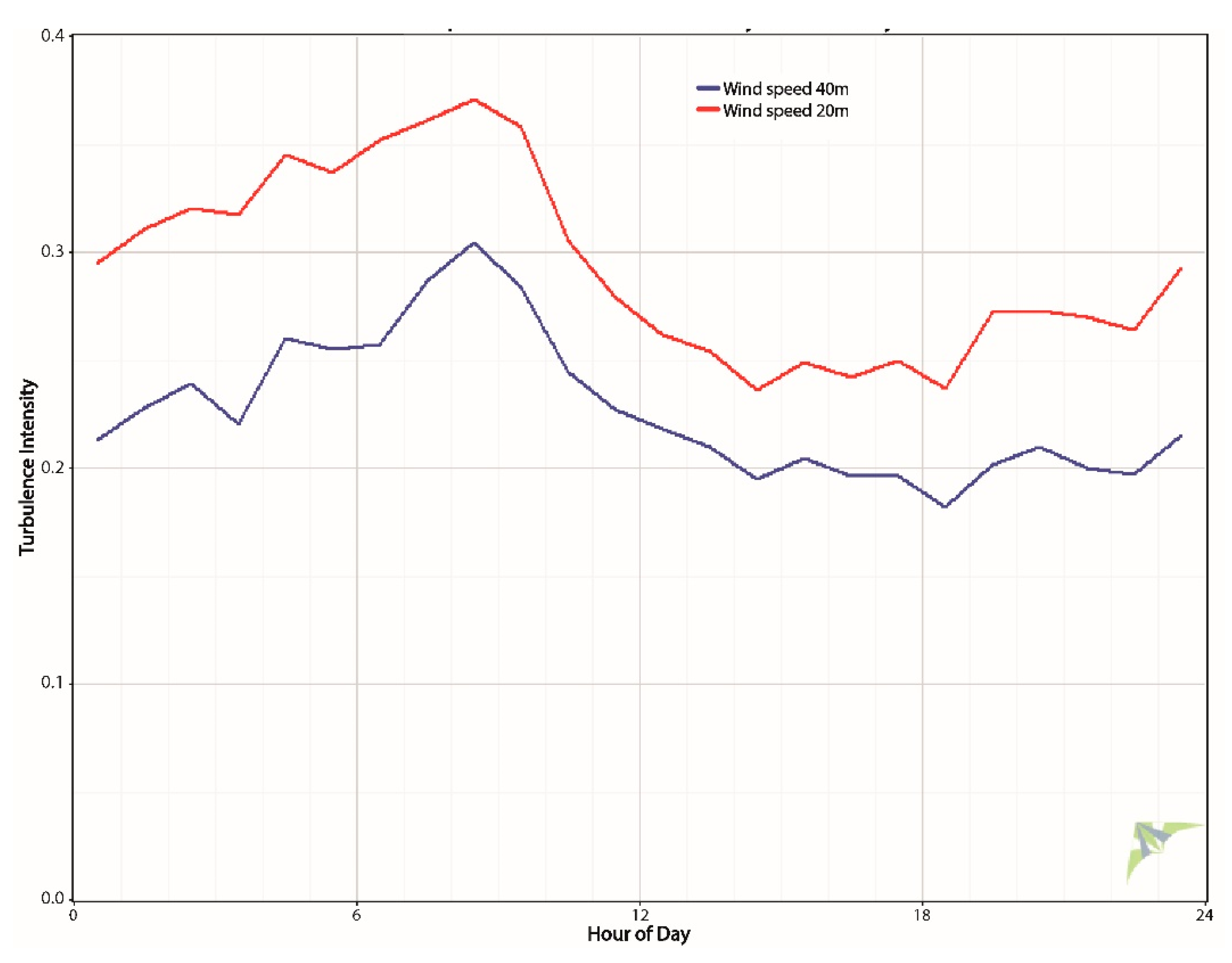
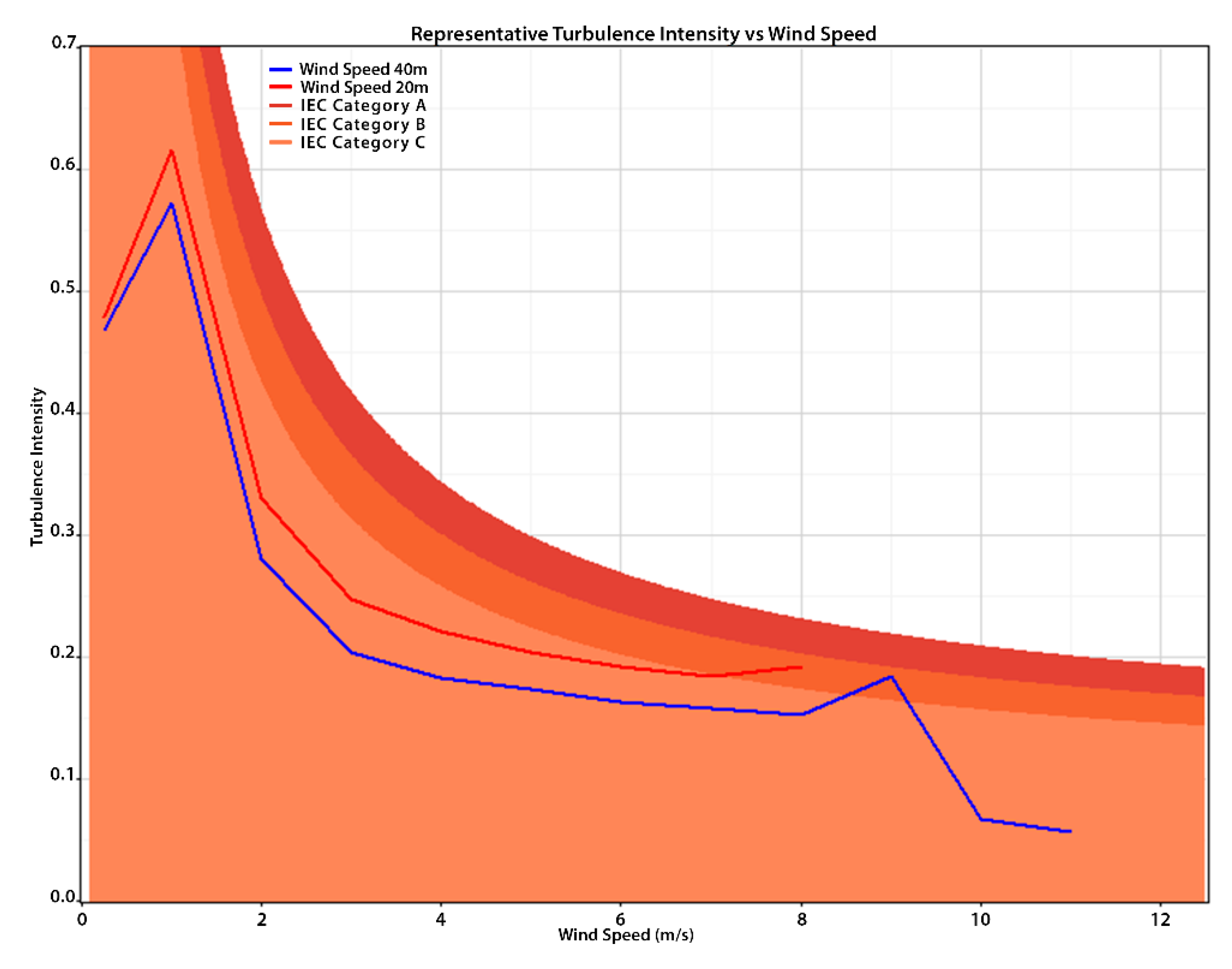
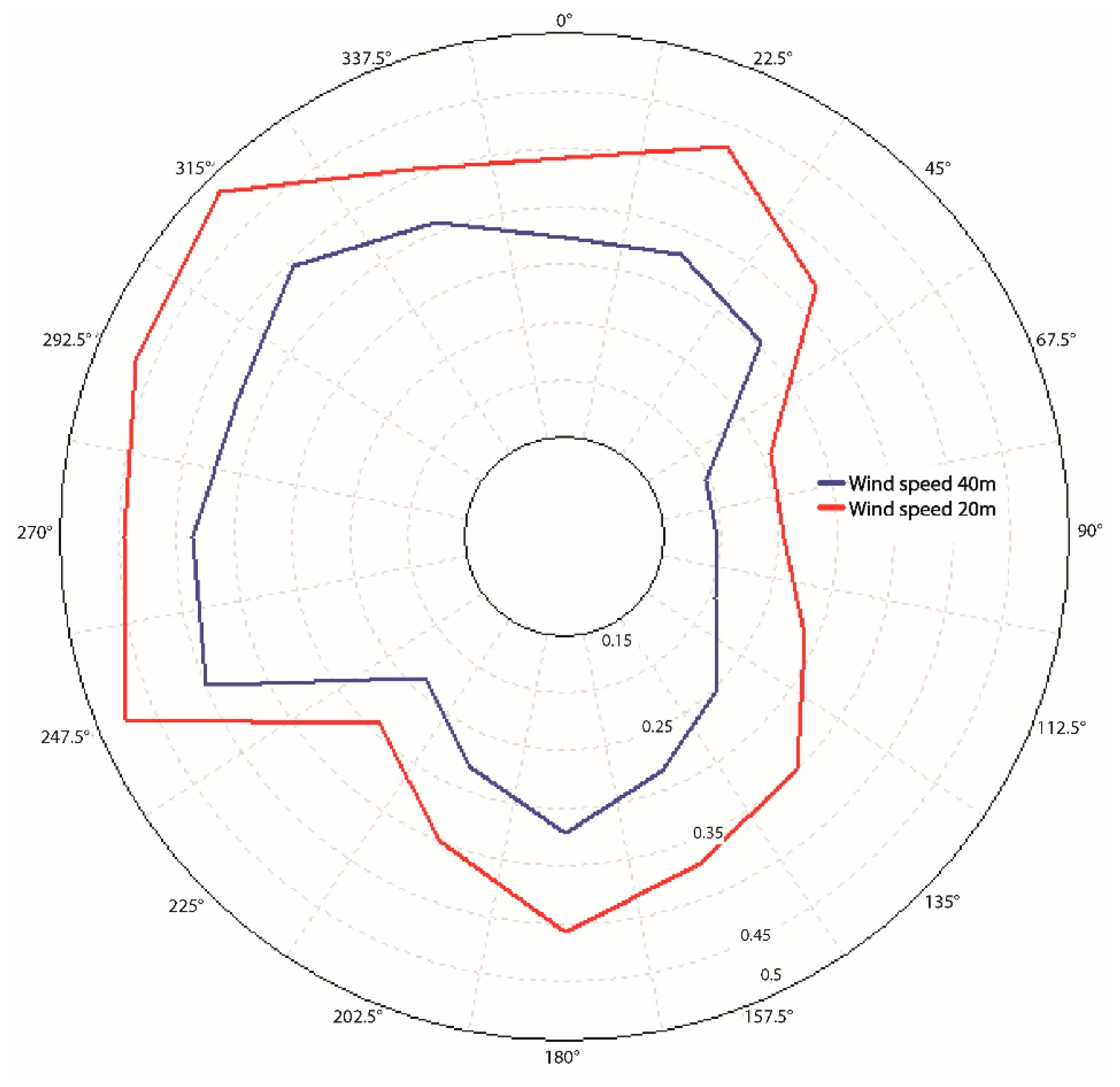
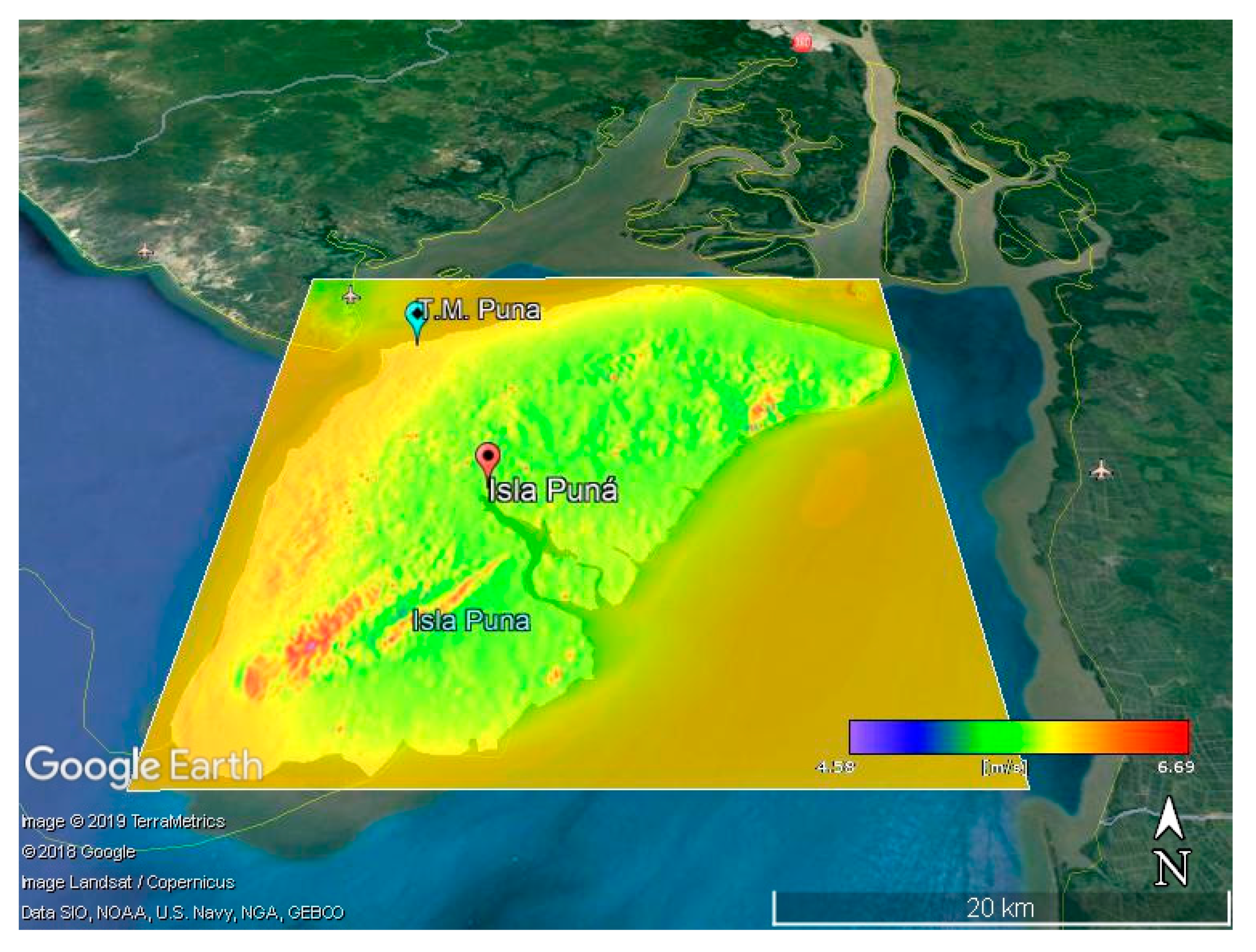
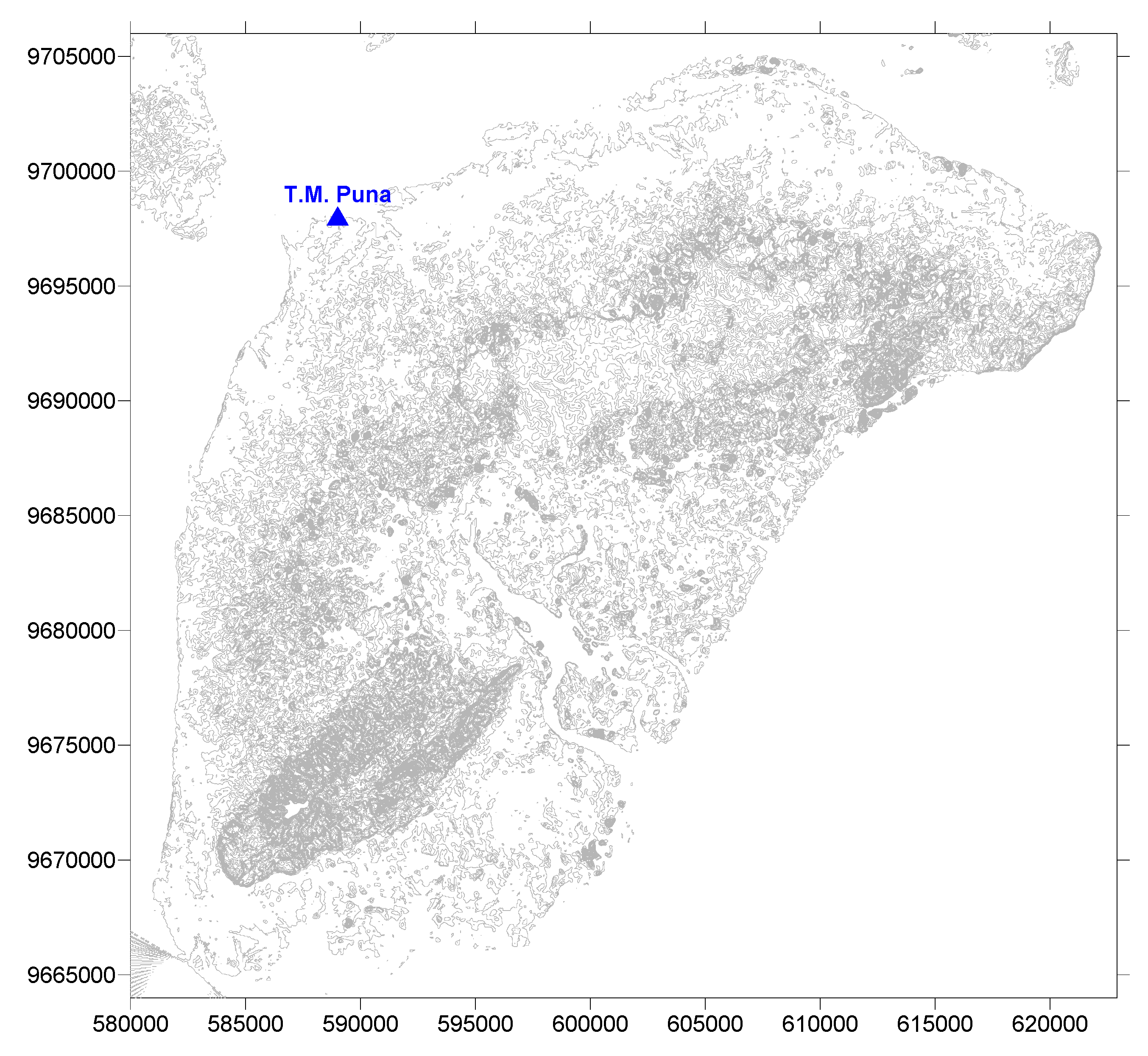
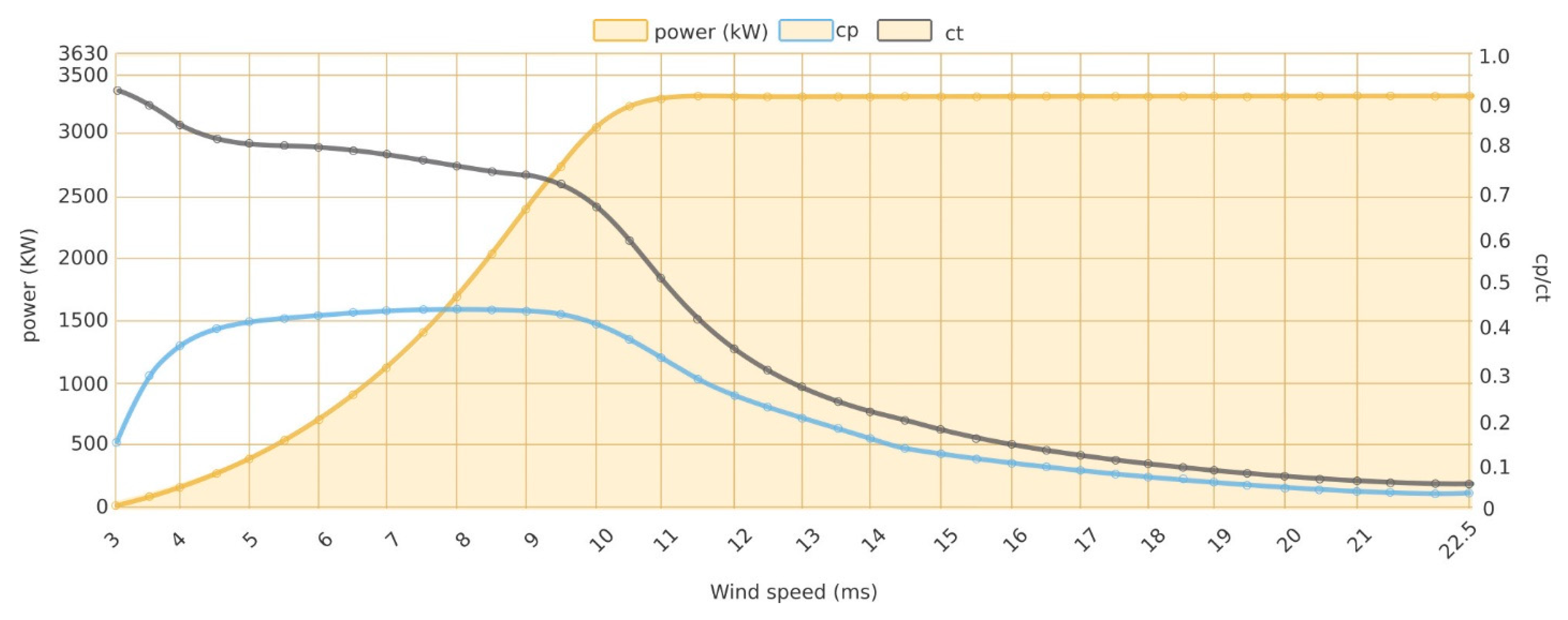
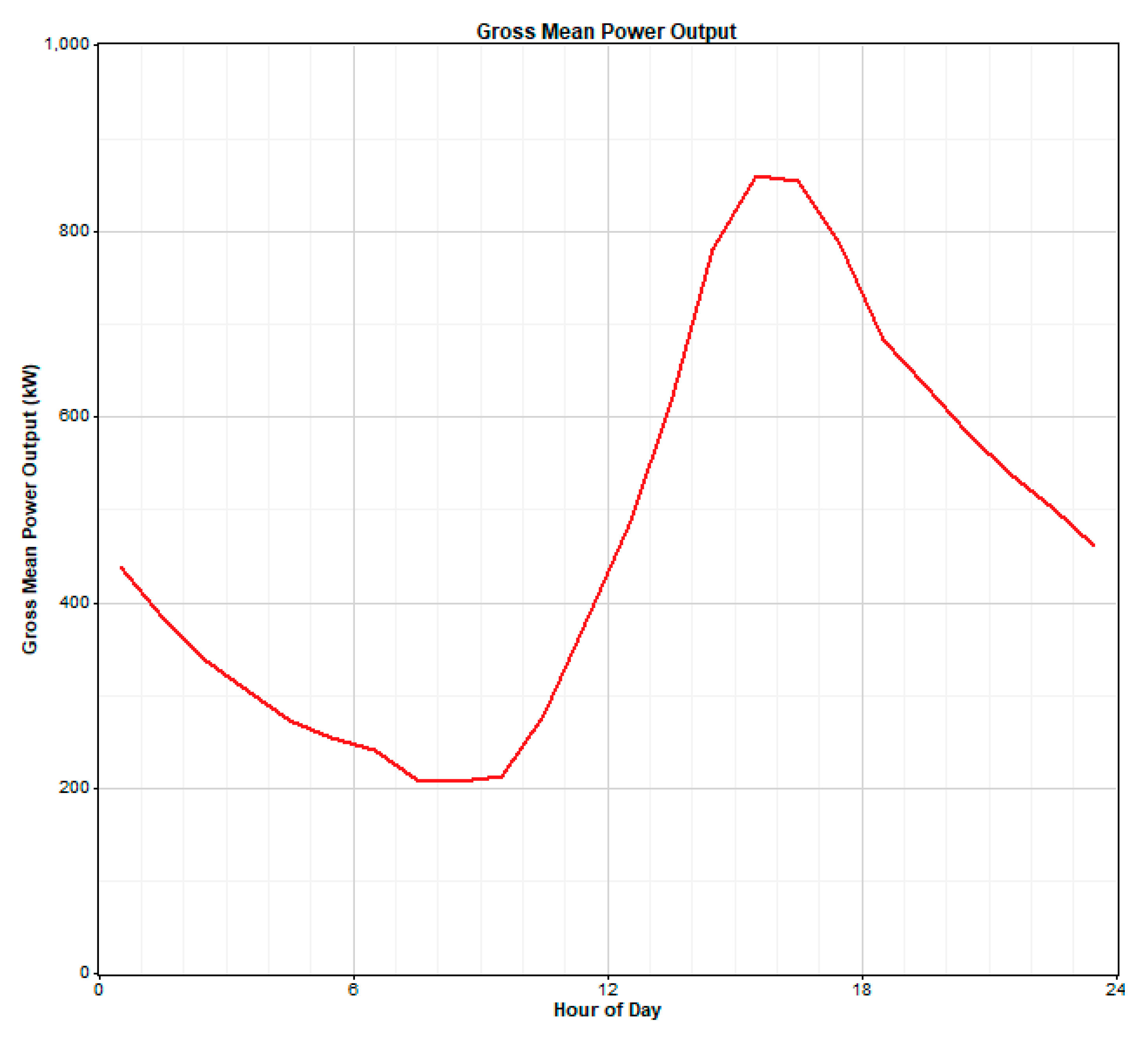
| Point | Geographical Coordinates | Point | Geographical Coordinates | ||
|---|---|---|---|---|---|
| X | Y | X | Y | ||
| 1 | 571,331.99 | 9,705,877.72 | 6 | 589,765.93 | 9,702,878.50 |
| 2 | 572,464.23 | 9,705,608.00 | 7 | 585,466.92 | 9,698,762.99 |
| 3 | 576,440.60 | 9,706,019.36 | 8 | 584,241.35 | 9,694,975.13 |
| 4 | 578,109.74 | 9,706,338.38 | 9 | 577,967.60 | 9,694,979.36 |
| 5 | 583,024.35 | 9,707,088.13 | 10 | 577,968.02 | 9,698,883.58 |
| ITEM | Number | Unit of Measurement | Unit Value (USD) | Total Value (USD) |
|---|---|---|---|---|
| Meters of anemometer tower | 40 | meters | 100 | 4000 |
| Tower assembly | 1 | overall | 1000 | 1000 |
| Construction of the concrete foundation to erect the tower | 4 | units | 250 | 1000 |
| Lease of the land where the anemometer tower was installed | 12 | month | 400 | 4800 |
| Transportation and food | 1 | overall | 500 | 500 |
| Internet for data transmission | 12 | month | 20 | 240 |
| Data logger NRG Symphonie Plus 3 | 1 | units | 2000 | 2000 |
| Anemometers (WindSensor P2546-OPR) | 2 | units | 381.3 | 762.6 |
| Wind vane NRG 200P | 2 | units | 262 | 524 |
| Temperature sensor 10S | 1 | units | 250 | 250 |
| Barometric pressure sensor BP20 | 1 | units | 402 | 402 |
| Relative humidity sensor RH5X | 1 | units | 445 | 445 |
| 20-Watt solar panel | 1 | units | 50 | 50 |
| 70-Ah battery | 1 | units | 100 | 100 |
| Franklin’s lightning rod | 1 | units | 150 | 150 |
| 3 × 16 concentric cable | 2 | roll | 60 | 120 |
| Electric board | 1 | units | 60 | 60 |
| 6-mm steel cable | 300 | m | 1 | 300 |
| 3/4″ turnbuckles | 21 | units | 10 | 210 |
| 3/4″ ground rod | 70 | units | 1 | 70 |
| TOTAL | 16,983.60 |
| Sector | Midpoint | Frequency (%) | Mean (m/s) vs. ‘Direction 0 A’ | Proportion of Total Wind Energy (%) | |||
|---|---|---|---|---|---|---|---|
| Direction 0 A | Direction 0 B | Speed 40 m | Speed 20 m | Speed 40 m | Speed 20 m | ||
| 1 | 0° | 1.77 | 1.75 | 2.625 | 1.963 | 0.53 | 0.34 |
| 2 | 22.5° | 2.43 | 2.29 | 2.729 | 1.933 | 0.74 | 0.42 |
| 3 | 45° | 3.4 | 2.6 | 3.006 | 2.301 | 1.29 | 0.93 |
| 4 | 67.5° | 21.33 | 5.14 | 4.661 | 4.007 | 24.21 | 24.39 |
| 5 | 90° | 40.77 | 39.65 | 5.003 | 4.357 | 55.62 | 56.89 |
| 6 | 112.5° | 13.54 | 25.54 | 4.122 | 3.456 | 10.88 | 9.8 |
| 7 | 135° | 4.71 | 8.37 | 3.534 | 3.086 | 2.56 | 2.63 |
| 8 | 157.5° | 2.74 | 3.58 | 2.797 | 2.575 | 0.81 | 1 |
| 9 | 180° | 1.77 | 2.42 | 2.567 | 2.286 | 0.45 | 0.5 |
| 10 | 202.5° | 1.63 | 1.81 | 2.866 | 2.681 | 0.51 | 0.64 |
| 11 | 225° | 1.77 | 1.87 | 3.762 | 3.495 | 1.33 | 1.57 |
| 12 | 247.5° | 0.61 | 1.19 | 3.02 | 2.72 | 0.27 | 0.31 |
| 13 | 270° | 0.59 | 0.47 | 2.455 | 2.085 | 0.17 | 0.16 |
| 14 | 292.5° | 0.94 | 0,71 | 2.297 | 1.824 | 0,17 | 0,13 |
| 15 | 315° | 0,94 | 1.23 | 2.196 | 1.572 | 0.17 | 0.09 |
| 16 | 337.5° | 1.06 | 1.36 | 2.613 | 1.935 | 0.29 | 0.19 |
| Turbine | Valid Time Samples | Hub Height Wind Speed (m/s) | Percentage of Time at | Simple Mean | Mean of Monthly Means | |||||
|---|---|---|---|---|---|---|---|---|---|---|
| Zero Power | Rated Power | Net Power (kW) | Net AEP | NCF | Net Power (kW) | Net AEP | NCF | |||
| (kWh/yr) | (%) | (kWh/yr) | (%) | |||||||
| Vestas V126-3.3 MW IEC IIIA (90 m) | 3191 | 4.94 | 8.26 | 0 | 466.2 | 4,083,967 | 14.13 | 466.2 | 4,083,960 | 14.13 |
| Gamesa G80-2.0 MW (80 m) | 3191 | 4.82 | 13.33 | 0 | 175.1 | 1,533,961 | 8.76 | 175.1 | 1,533,962 | 8.76 |
| GE 2.75-100 (80 m) | 3191 | 4.82 | 13.99 | 0 | 212 | 1,856,809 | 7.71 | 212 | 1,856,807 | 7.71 |
| Suzlon S66-1.25 MW (80 m) | 3191 | 4.82 | 13.89 | 0 | 104.5 | 915,088 | 8.36 | 104.5 | 915,084 | 8.36 |
| Vestas V100-1.8 MW 60 Hz (80 m) | 3191 | 4.82 | 8.83 | 0 | 292.3 | 2,560,848 | 16.11 | 292.3 | 2,560,851 | 16.11 |
© 2019 by the authors. Licensee MDPI, Basel, Switzerland. This article is an open access article distributed under the terms and conditions of the Creative Commons Attribution (CC BY) license (http://creativecommons.org/licenses/by/4.0/).
Share and Cite
Merizalde, Y.; Hernández-Callejo, L.; Gracia Bernal, J.; Telmo Martínez, E.; Duque-Perez, O.; Sánchez, F.; Llombart Estpopiñán, A. Wind Resource Assessment on Puná Island. Appl. Sci. 2019, 9, 2923. https://doi.org/10.3390/app9142923
Merizalde Y, Hernández-Callejo L, Gracia Bernal J, Telmo Martínez E, Duque-Perez O, Sánchez F, Llombart Estpopiñán A. Wind Resource Assessment on Puná Island. Applied Sciences. 2019; 9(14):2923. https://doi.org/10.3390/app9142923
Chicago/Turabian StyleMerizalde, Yuri, Luis Hernández-Callejo, Javier Gracia Bernal, Enrique Telmo Martínez, Oscar Duque-Perez, Francisco Sánchez, and Andrés Llombart Estpopiñán. 2019. "Wind Resource Assessment on Puná Island" Applied Sciences 9, no. 14: 2923. https://doi.org/10.3390/app9142923
APA StyleMerizalde, Y., Hernández-Callejo, L., Gracia Bernal, J., Telmo Martínez, E., Duque-Perez, O., Sánchez, F., & Llombart Estpopiñán, A. (2019). Wind Resource Assessment on Puná Island. Applied Sciences, 9(14), 2923. https://doi.org/10.3390/app9142923







